Principle of hand-impact extraction | extraction methods to distinguish different baking degrees
For professional baristas, please follow the coffee workshop (Wechat official account cafe_style)
Extraction is the process of dissolving a substance in water. The principle of extraction is nothing more than the release of substances needed by coffee powder when it comes into contact with water.
Steaming is to infiltrate all coffee powder and prepare for the following formal extraction.
Hand-brewed coffee is a simultaneous process of flavor extraction and filtration, and the extraction takes place at the center of pouring water. The key lies in how to control and balance the extraction amount of various components in roasted beans to prepare coffee.
Today, do an experiment to see if the extraction of different baking degrees is different, we are prepared:
Medium and deep baking manning VS shallow baking ninety + candles
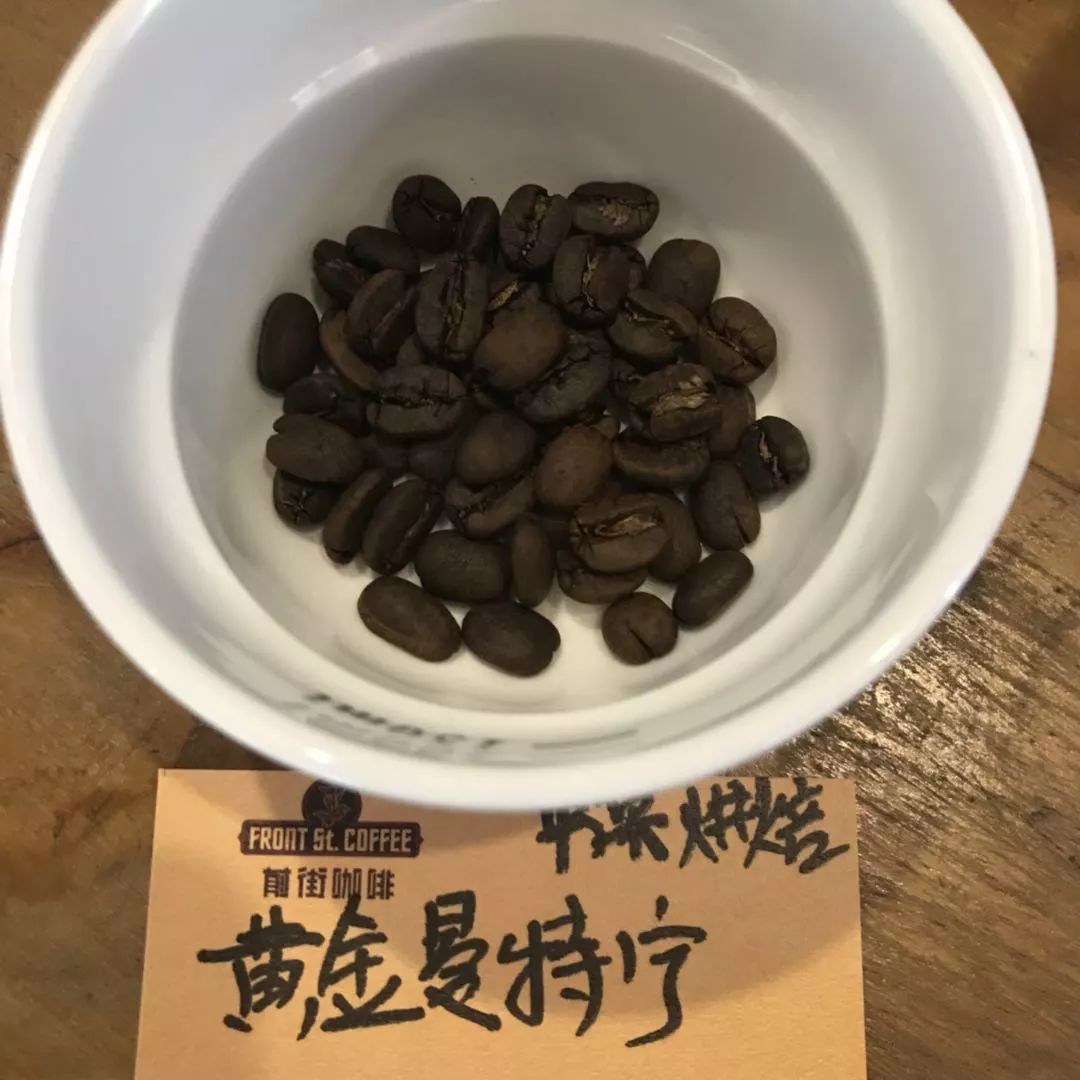
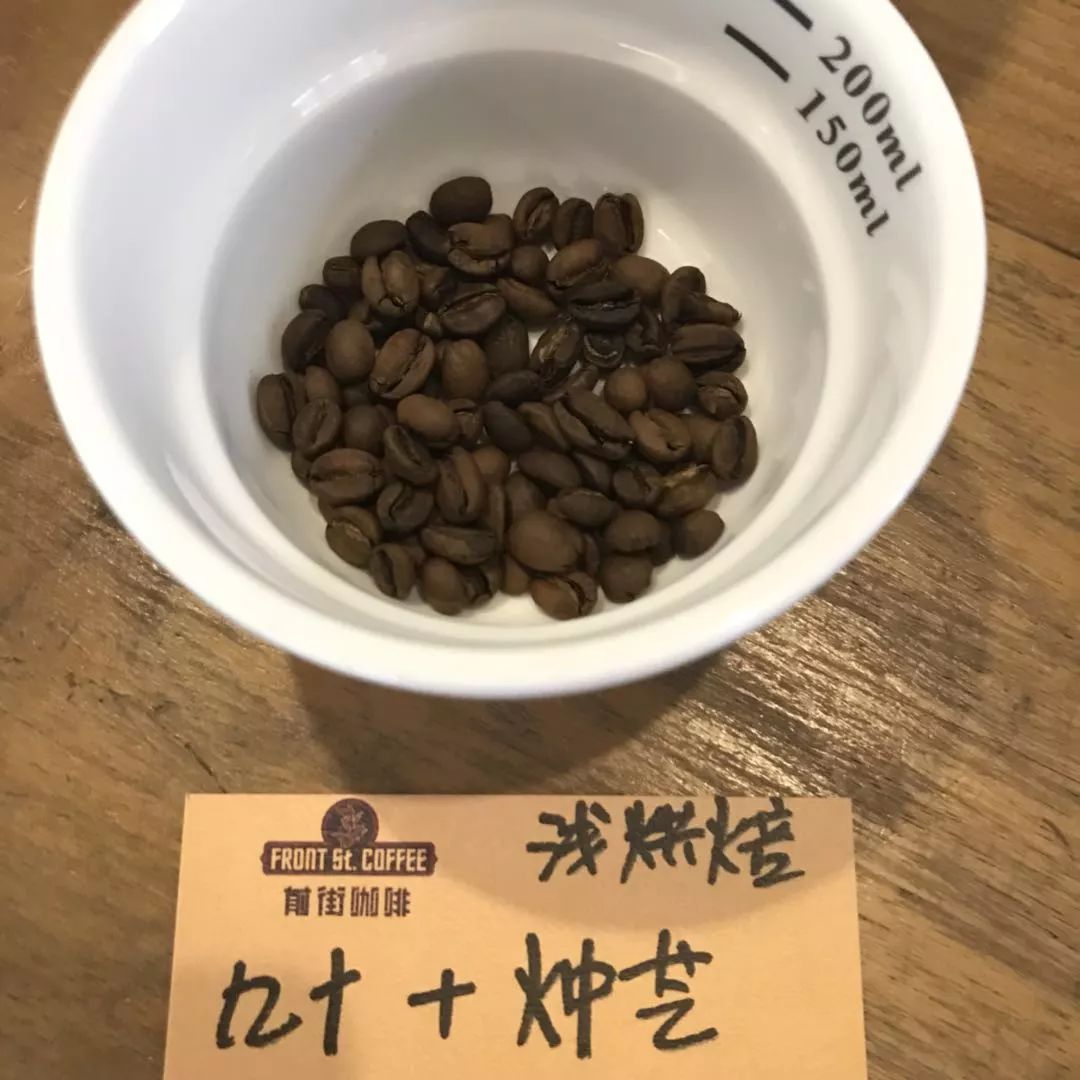
The degree of grinding is the same, little Fuji ghost teeth 4
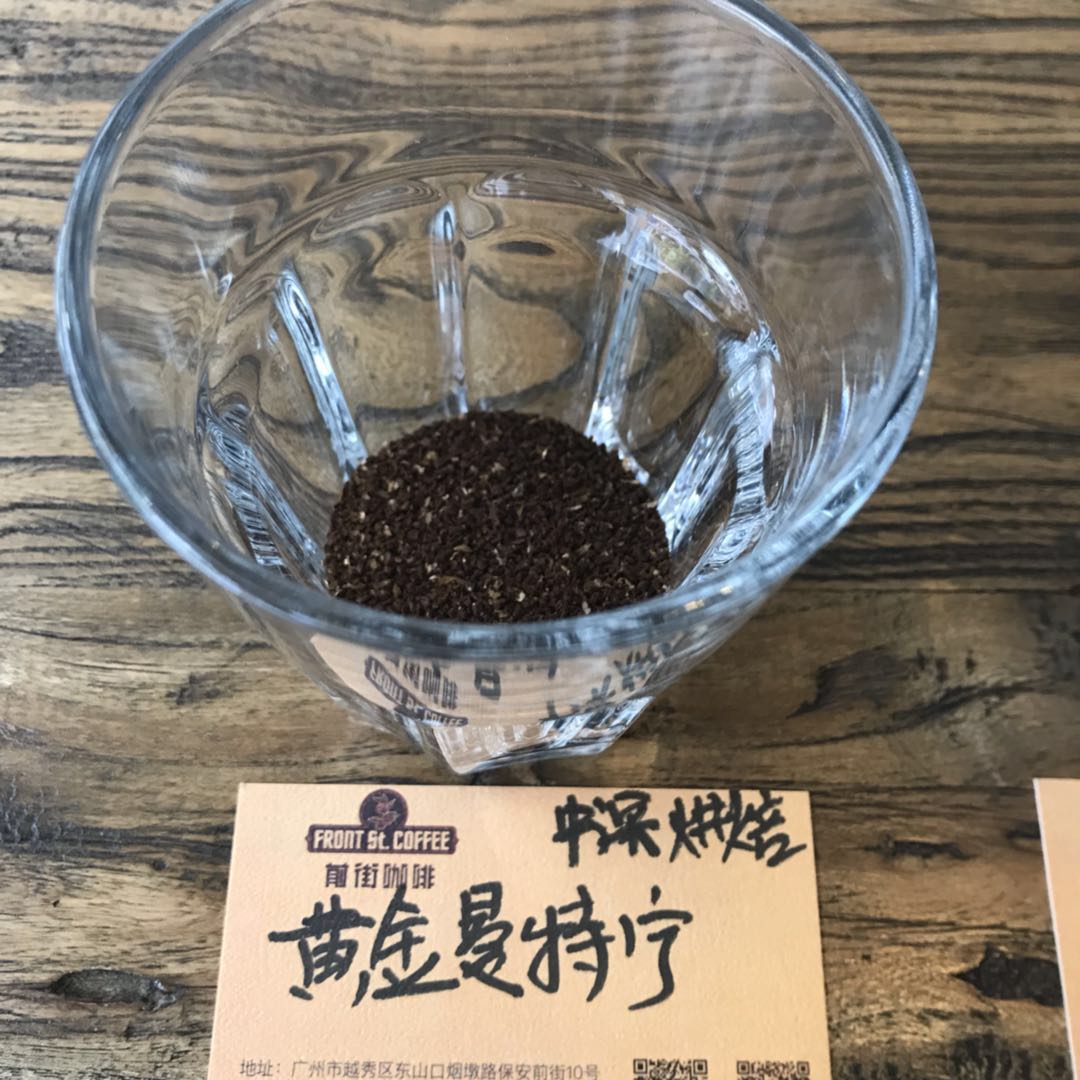
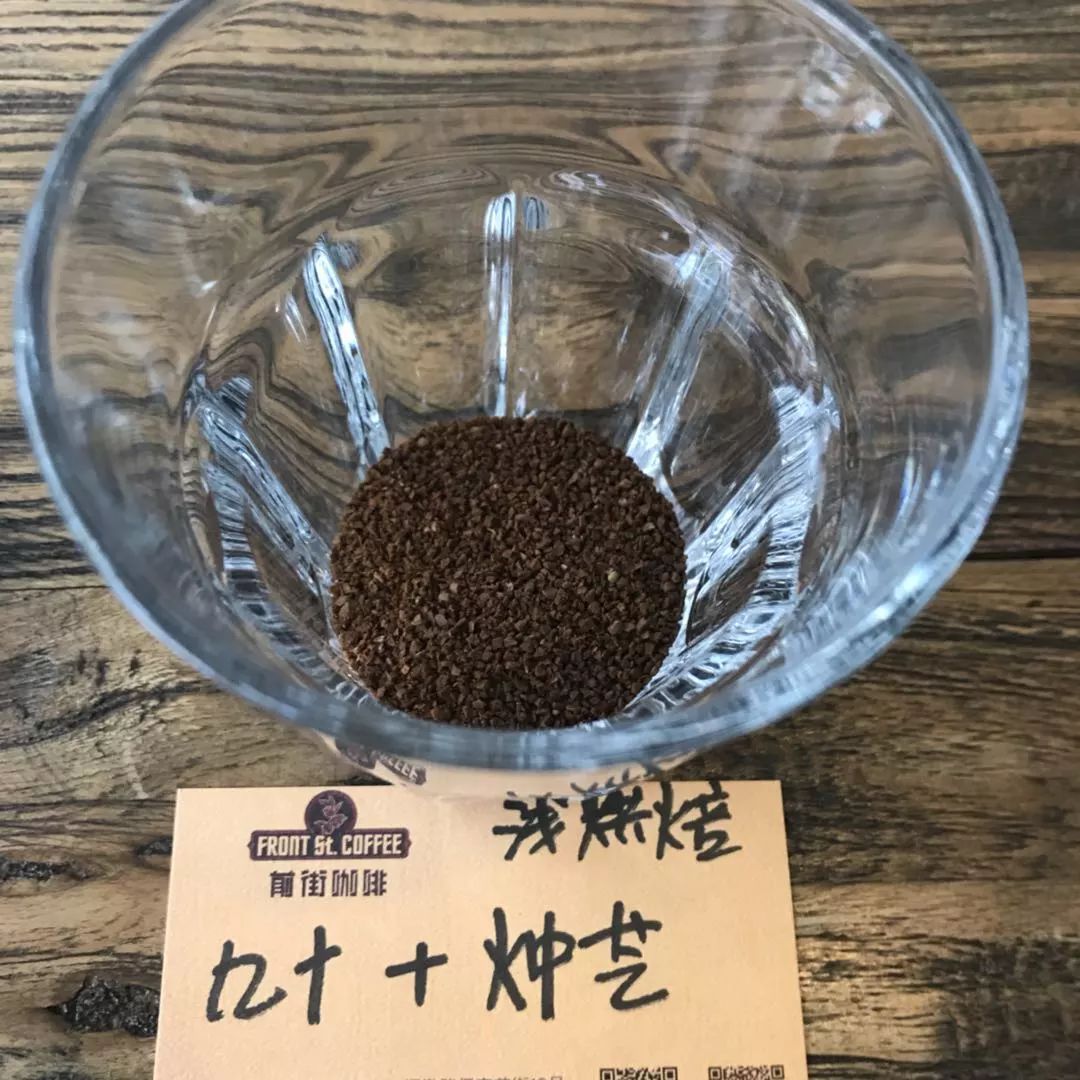
Water temperature 90 degrees, water injection
When we hand-feed water for the first time, we will see the coffee powder expand, this process is in the exhaust, in this process, the coffee has been fully prepared for extraction.
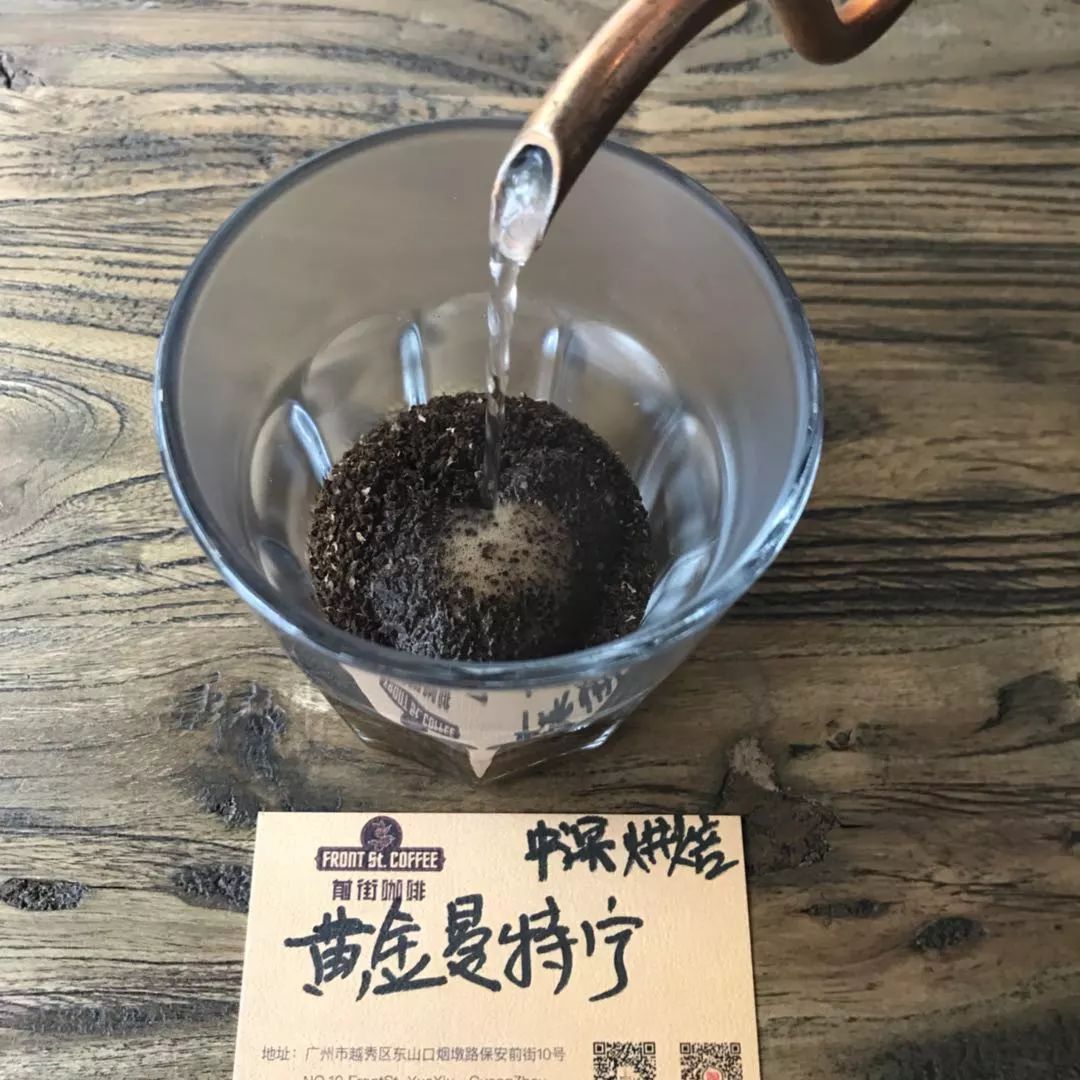
"stew": to help exhaust
Coffee beans in the roasting process from raw beans to ripe beans will undergo a series of chemical reactions and physical changes, after a certain degree of roasting, coffee beans will accumulate a large amount of gas (most people think it is carbon dioxide).
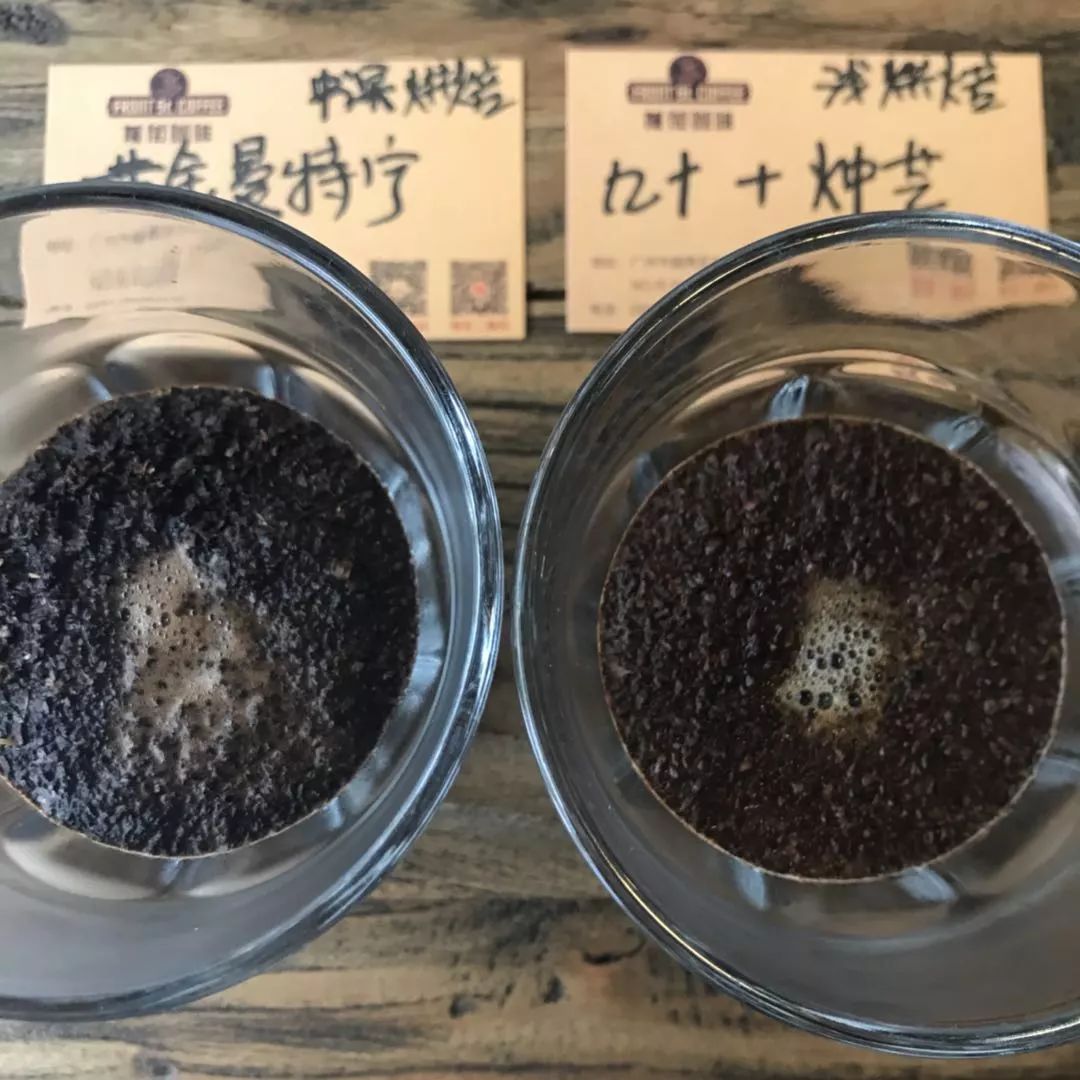
The bottom layer because the coffee powder is in full contact with water, resulting in the active dissolution and diffusion of coffee ingredients, but the upper layer is mixed with the gas discharged from the coffee, so the coffee is not in full contact with water. So even if you put in enough coffee powder, some of the coffee ingredients can't be completely dissolved.
Diffusion
This process is diffusion, and the side is like this!
A careful observation of the coffee powder floating on the water shows that it has been divided into two layers.
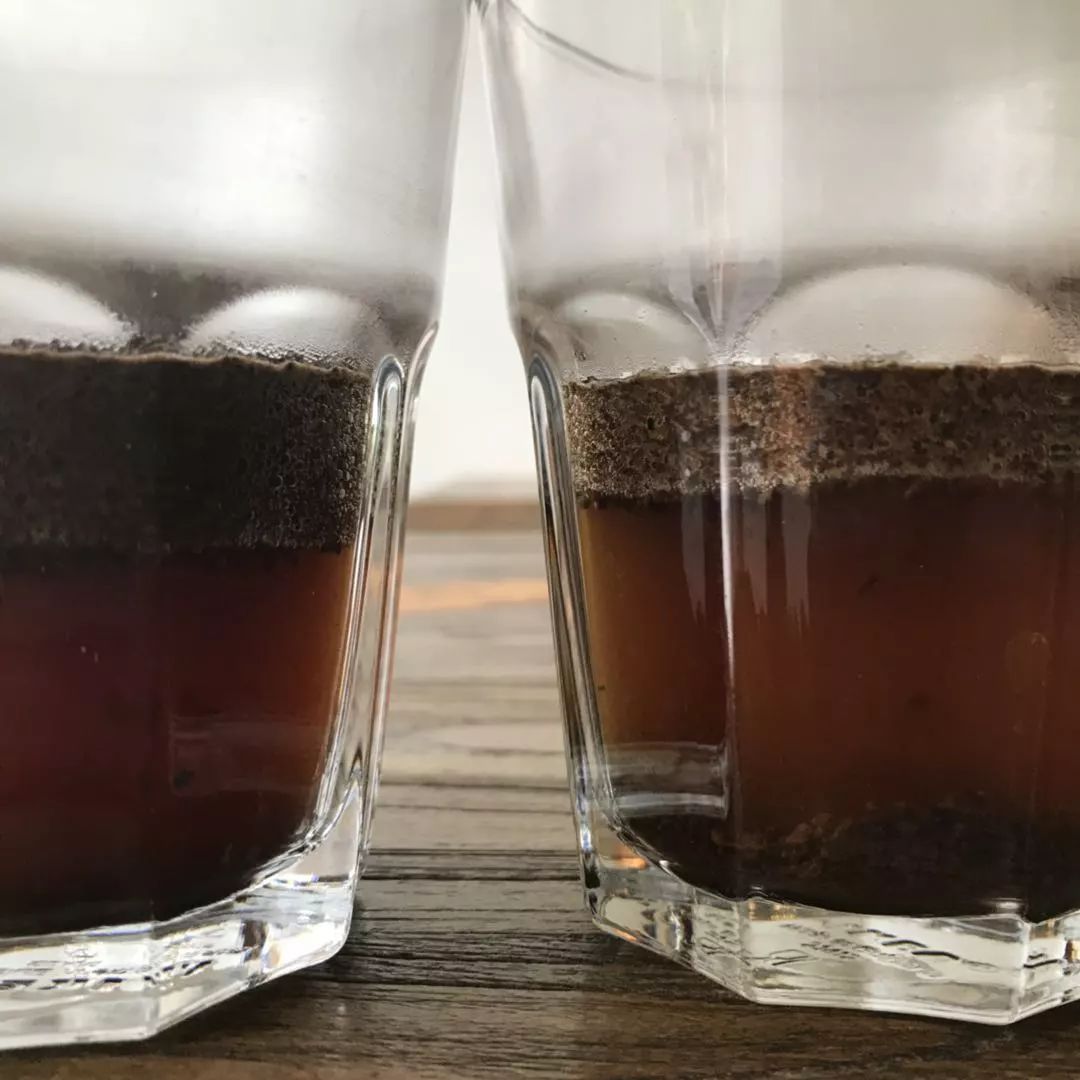
In general, coffee beans with deep roasting have more gas, obviously have high water absorption, and the powder layer is particularly thick; for light-roasted coffee beans, the amount of gas stored is not so much, and the powder layer is not so thick.
Stirring: accelerating dissolution and diffusion
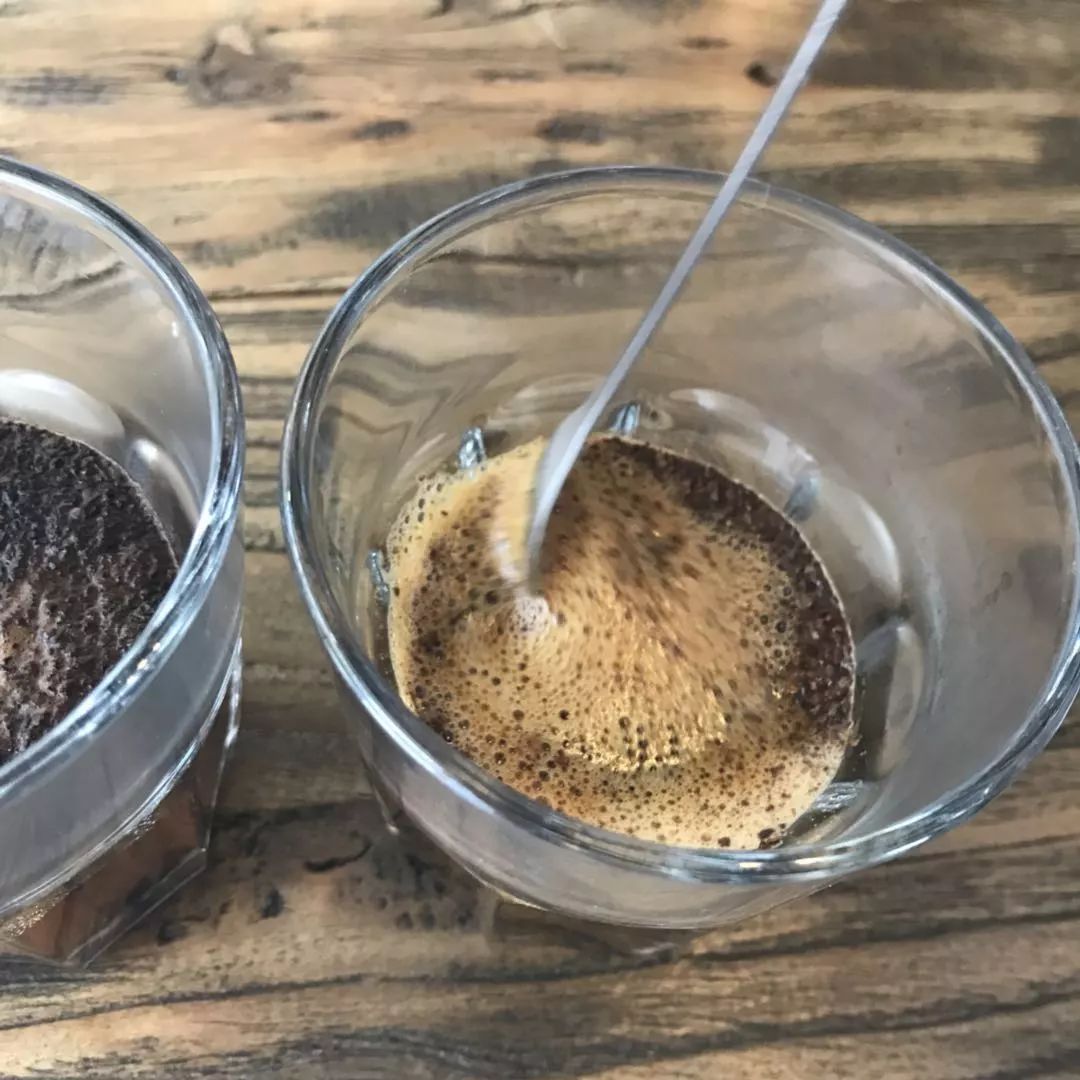
Stand still for a while and begin to stir the coffee powder. The coffee powder begins to dissolve and spread.
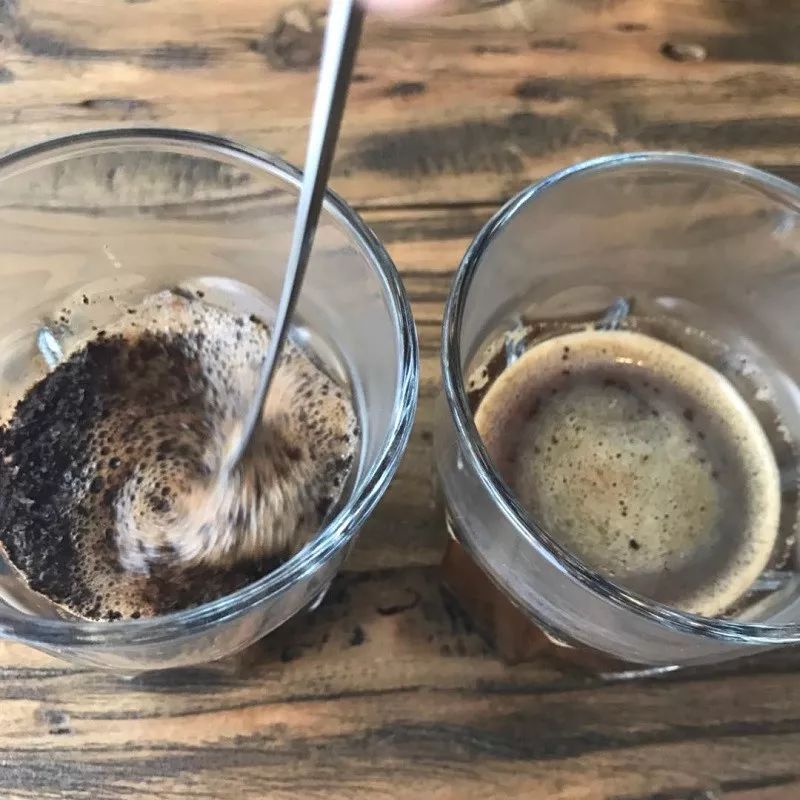
In order to fully form dissolution and diffusion, it is sometimes stirred in the filter cup with a spoon. Stir with a spoon and mix the layered parts again so that the coffee and water can be fully contacted.
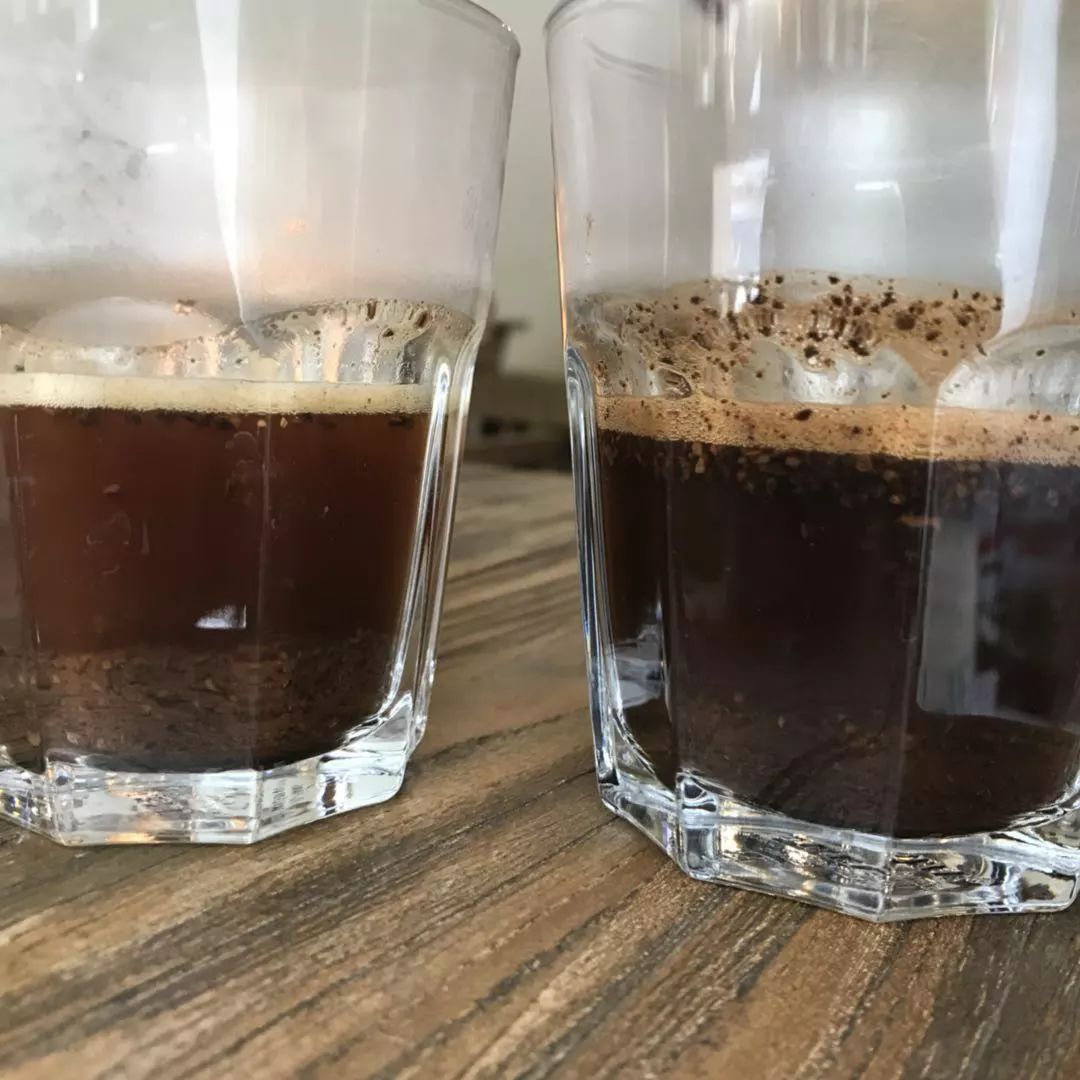
After stirring, the light baked ninety + candles will sink to the bottom faster, and some of the medium and deep Mantenin will float.
Therefore, for medium and shallow roasted coffee beans, in the process of brewing, the coffee powder sank more time on the surface of the water, and the resistance of water flowing out of the filter cup became greater, in order to better control the extraction time; the choice on the filter cup, it is recommended to use a filter cup with a faster flow rate. For example, the V60 ~ (th) key Diamond Cup
If the water is used to hit the coffee powder and make the powder layer tumble, the water injection itself is to fully stir the water and coffee, so as long as the water and coffee can be stirred well, it can also be stirred without a spoon, and the coffee powder can also be in full contact with water.
First water injection
A small water column is injected from the center, and then slowly wound out, just like gently laying a layer of water on the noodle, although it is a small water column, please be careful not to slow down the circle speed, because once the circle speed is too slow, the water column will flow in a single direction, so that the draught of the powder layer is uneven.
After the end of the first water supply, the coffee powder particles will push each other due to exhaust, resulting in expansion. When the expansion reaches the highest point or is about to rest (the surface water will slowly dry), it is the time to add water for the second time.
Second water injection
The second water injection also starts from the middle, with a small water column injected into the bottom of the powder layer. In order to concentrate the penetrating force of the water column, the range of movement around the water column should be small, about the size of an one-dollar coin, and then wound out. At the beginning of the second water supply, we should pay attention to the amount of water, and try not to exceed the height of the powder layer, that is, when the water column is wound close to the filter paper, the water supply can be stopped.
Photo Source: handmade Coffee
Hario V60 in the initial water supply, because most of the coffee powder particles are in a state of exuberant exhaust, and the air produced by it will soon be transmitted to the edge of the filter paper, so if you give too much water at this time, it will bring the water to both sides instead of the bottom, so use a small water column to speed up the circle to avoid these problems.
As the thicker powder layer on the edge of the original filter paper becomes heavier because of the draft, and as the water level falls and becomes thinner, the water level drops to half and the third water injection can be carried out.
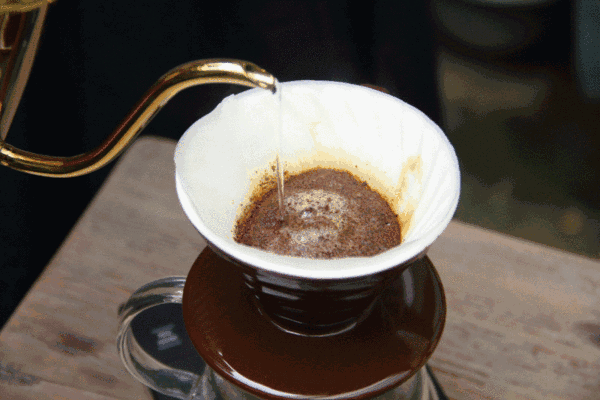
The third water injection
From the third water supply, it is necessary to observe the extent of the decline of the water level, also from the center of the water supply circle, the amount of water should not exceed the height of the powder layer, then it will also be observed that the proportion of foam has already occupied the surface, and the third water injection will increase the tumbling of coffee granules, let all the deposited particles tumble, and then dissolve the soluble matter.
The rolling particles will start to rest because they stop adding water, and at this time they have to rely on the velocity caused by the falling water level to make the coffee particles produce friction, so once the addition of water stops, the coffee powder particles will sink, causing blockage, so pay special attention to the rhythm of adding water.
If the water is cut off too many times, it is tantamount to letting the coffee powder particles soak in the water all the time, which will lead to the astringent and miscellaneous taste of the coffee extract at the end.
When approaching the set amount (15 grams of powder, 225 grams of water), the filter cup can be removed.
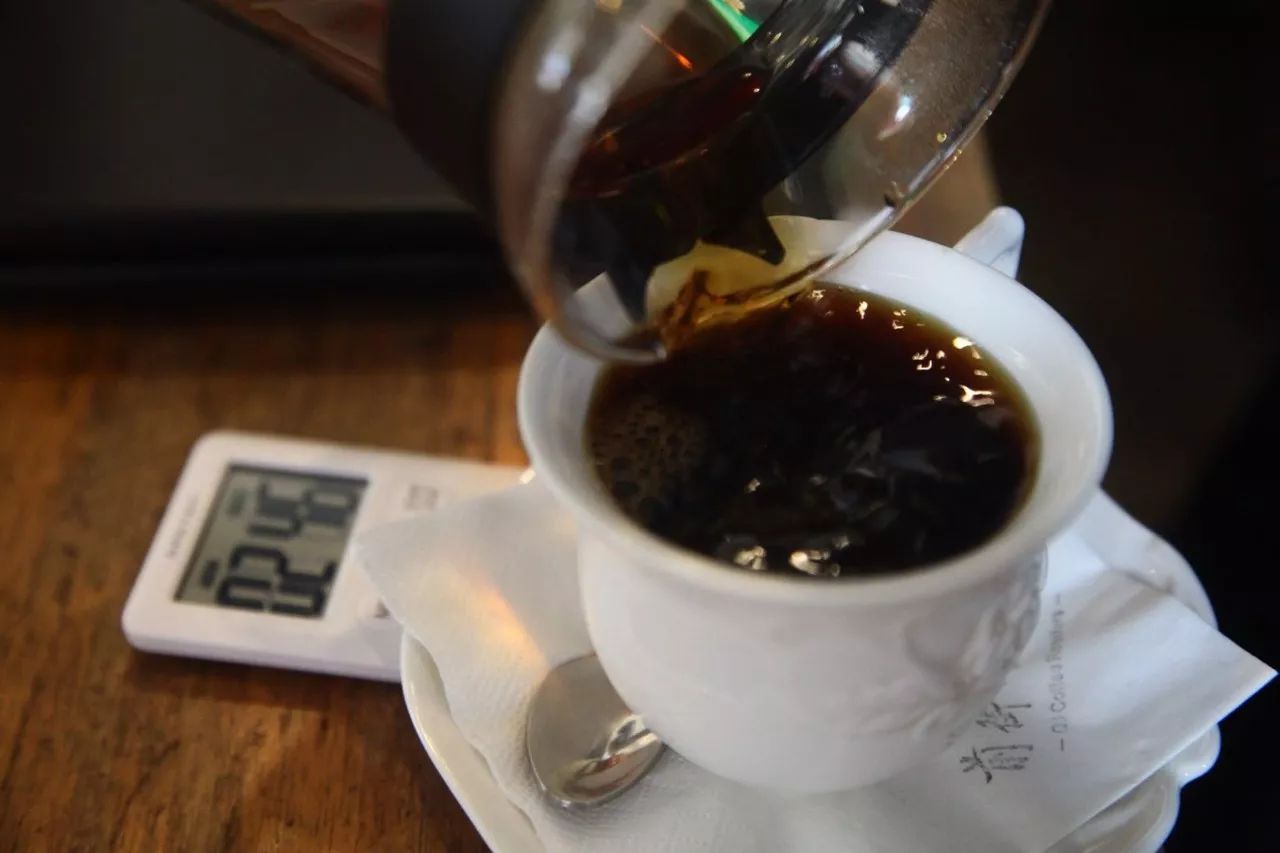
Important Notice :
前街咖啡 FrontStreet Coffee has moved to new addredd:
FrontStreet Coffee Address: 315,Donghua East Road,GuangZhou
Tel:020 38364473
- Prev

The new book, the Great Coffee, contains the stories of 10 Chinese coffee practitioners.
For the exchange of professional baristas, please follow the coffee workshop (Wechat official account cafe_style). This article is extracted from the "Great Coffee" Neo-classic accidental MOOK Studio published in November and has been authorized by the author. "Great Coffee" is the first issue of the MOOK series of readers focused on by the new classics, which is designed by well-known designers, fashionable and exquisite. This book is in the form of an exclusive interview with characters
- Next
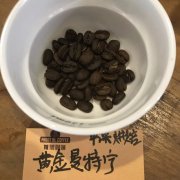
Hand flushing skills, cooking gold manning and 90 + candlelight steaming time is different?
Professional baristas please pay attention to the coffee workshop (Wechat official account cafe_style) extraction is the process of making the substance soluble in water. The principle of extraction is nothing more than the release of substances needed by coffee powder when it comes into contact with water. Steaming is to infiltrate all coffee powder and prepare for the following formal extraction. Hand brewing coffee is a simultaneous process of flavor extraction and filtration, and is poured into
Related
- How did the Salvadoran coffee industry develop in Central America?
- What exactly does the golden cup extraction of coffee mean?
- The Origin of Coffee flower
- [2023 Starbucks World Earth Day] there are more meaningful things besides free Starbucks coffee!
- What kind of coffee is there in Spain? 9 Flavors of Spanish Coffee
- Aromatic African coffee| Kenya's coffee culture and historical production area
- Liberica Coffee Bean knowledge: the characteristics of Liberian Coffee beans of the three original species of Coffee beans
- The origin and formula of Spanish latte introduces the taste characteristics of Bombon coffee in Valencia, Spain.
- How to adjust the solution of over-extracted coffee
- What is the tasting period of coffee beans? What is the period of coffee and beans? How should coffee wake up and raise beans?

